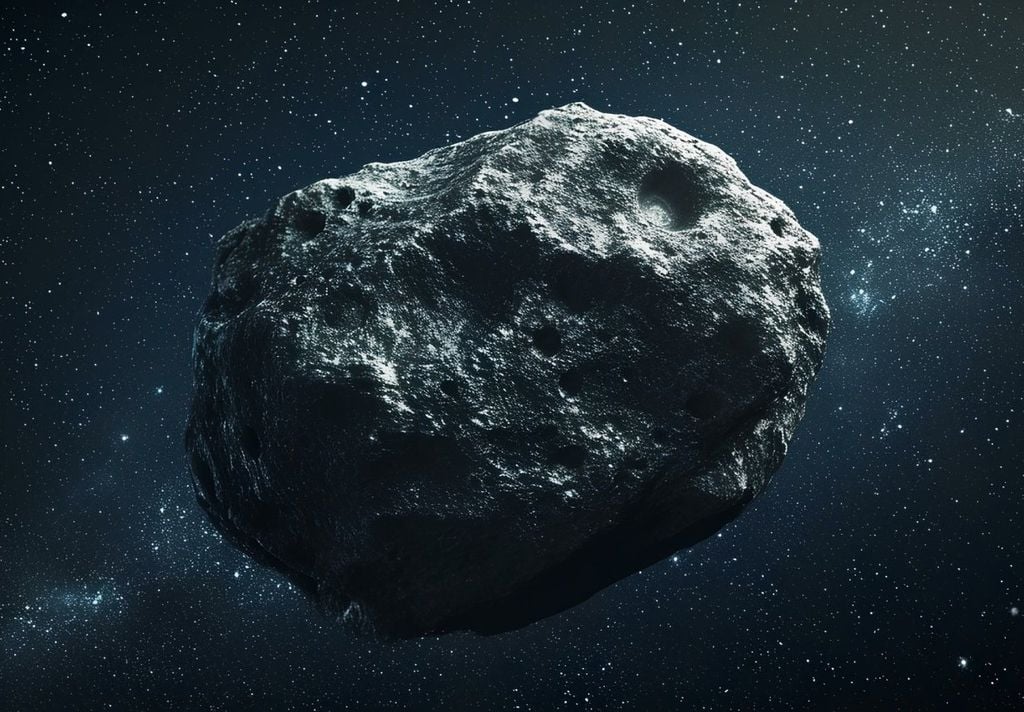Christmas Eve Cosmic Visitor: Gigantic Asteroid to Sail Past Earth on Christmas Eve
Santa’s sleigh won’t be the only thing zipping through the skies on Christmas Eve. A 120-foot asteroid will hurtle past Earth on Tuesday, traveling around 15,000 miles per hour.

It will be a relatively close call Tuesday as far as asteroids go, but there is no reason to worry. Asteroid 2024 XN1 is about the size of a 10-story building. Scientists estimate its diameter is between 95 to 230 feet. The most important number to know is that it will pass our planet at a distance of 4.48 million miles.
A 120-foot asteroid named 2024 XN1 is set to make a close approach to Earth on Christmas Eve. Traveling at 14,743 miles per hour, the asteroid will safely pass by at a distance of 4.48 million miles, which is 16 times the distance between Earth and the Moon.
The Daily Guardian (@DailyGuardian1) December 20, 2024
.
.
.#asteroid pic.twitter.com/WH1vcCPYQO
This week’s cosmic event has captured the imagination of scientists who study celestial phenomena. NASA will use this relatively close encounter to put to use its cutting-edge technology in order to glean insight into what makes 2024 XN1 tick. The space agency has discovered over 34,000 near-Earth objects of various sizes.
Asteroids carry the building blocks of our solar system
By studying asteroids, the primitive,” leftover building blocks of the solar system formation process,” NASA can find clues to the chemical mixture that helped form the planets more than 4 billion years ago. These celestial objects, comets, and asteroids are ancient leftovers from the solar system’s creation, rich with information for researchers.
What do we know about the asteroids & comets in Earth's neighborhood? There are lots out there & NASA's on the hunt. #PlanetaryDefense which includes finding, tracking & characterizing near-Earth objects is part of our mission. Here's what we've found: https://t.co/fL9NCTH1Af pic.twitter.com/OLrkxnkcar
— Dr. Nicky Fox (@NASAScienceAA) July 1, 2024
The Christmas Eve flyby isn’t Earth’s only encounter with an asteroid this month. NASA had the opportunity to study the newly discovered asteroid 2024 XA in early December when it passed just over 800 miles above the Pacific Ocean. It was the closest flyby of an asteroid of 2024 and the second closest on record (since 1900).
Newly-discovered #asteroid 2024 XA passed only 843 miles above the Pacific Ocean yesterday. This shortened its orbital period from 4 years to 1.5 years, ensuring it will make more frequent close encounters with Earth. It is 1-3 meters wide. pic.twitter.com/jzjPHWPtmZ
— Tony Dunn (@tony873004) December 2, 2024
Asteroid 2024 XA was the 123rd known asteroid this year so far to pass Earth within one lunar distance, or 238,855 miles, the average distance between the Earth and the Moon.
Coming close but no cause for concern on Christmas Eve
NASA and the European Space Agency (ESA) say 2024 XN1’s orbit classifies it as a close approach, which means a distance within 4.65 million miles from Earth. The asteroid will pass our planet closest to Earth on Christmas Eve at a distance of about 18 times further than one lunar distance. It might be a significant distance for space scientists but not close enough to cause any alarm. Both space agencies say there is no risk of a collision.
“It will be very far away, about 18 times farther from the Earth than the Moon, and so with this predicted path, it won’t come close enough to hit the Earth,” said Royal Greenwich Observatory astronomer Jess Lee, per The Jerusalem Post.
Another relatively close call on Christmas Day
Asteroid 2024 XN1 has not been included on the ESA’s risk list, which includes objects with a non-zero chance of collision with Earth. If you are an amateur astronomer, don’t waste your time setting up your telescope because you won’t be able to view it with your telescope.
Known Near-Earth objects as tracked by NASA over a period of 20 years
— World and Science (@WorldAndScience) December 18, 2024
Blue represents near-Earth asteroids. Orange represents main-belt asteroids between the orbits of Mars and Jupiter
(Credit: NASA Jet Propulsion Laboratory) pic.twitter.com/G6HSU2Avs6
There is a special gift coming on Christmas Day for people who find asteroids fascinating. According to NASA’s asteroid watch, a bus-sized asteroid will pass within 618,000 miles of Earth on Christmas Day. There is no risk of collision with this asteroid either. That is a good thing since it is considered a “potential city killer.”







